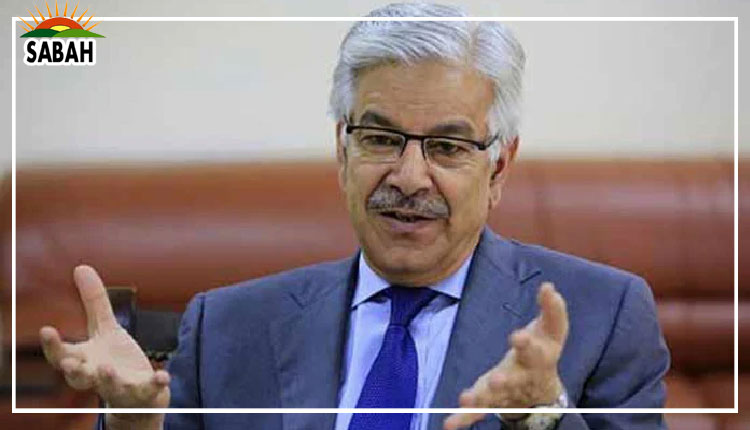Restructuring electricity tariffs …..Ammar Habib Khan
The power value chain is a labyrinth, where an intervention at one end can result in a mix of intended and unintended consequences at the other. Electricity tariffs at the consumer level are largely determined through a cost-plus mechanism – wherein all costs associated with generation, transmission, and distribution of electricity are added together, and are a function of various factors, including fuel prices, interest rates, exchange rates, expected consumption, etc. These costs can be further broken down into variable costs and fixed costs.
The variable costs (or energy costs) in this case are largely fuel prices – wherein if electricity is generated, more fuel is consumed, and the variable cost incurred remains a function of prevalent price of respective fuel in the market. The fixed costs in this case are effectively capacity costs. These are the costs that are incurred to establish generation and transmission capacity, such that necessary generation and transmission capabilities are in place to generate and dispatch electricity as per demand.
The variability of temperature in the country entails that electricity demand peaks during the summer, thereby entailing the presence of incremental capacity to support peak demand during summer. It is estimated that peak demand is almost three times the demand for electricity during winter. Such significant variance in demand, which is a function of cooling necessitates the presence of incremental capacity such that uninterrupted supply of electricity is available during summer. Such incremental capacity comes at a cost, which is covered through incremental capital through a mix of equity, and debt. To pay a fair market return on equity, and to repay debt, and associated interest payments, necessary capacity costs are incurred.
As additional capacity has started generating electricity in the last few years, capacity costs associated with the same continue to increase, largely as a function of interest and principal repayment of debt associated with establishing these projects. Since most of this debt was in US dollars, any depreciation of the Pak rupee against the US dollar further increases these capacity costs. A contractionary monetary policy post-pandemic led to increase in interest rates in dollar terms from near-zero to more than five per cent – this led to significant increase in debt servicing costs.
Developing economies like Pakistan continued to struggle to come to terms with rising interest rates, eventually resulting in sharp depreciation of local currency. Such depreciation further compounded the capacity payments, eventually feeding into increasing electricity tariff paid by the consumer.
We are currently at a state where capacity payments (or fixed costs) will make up roughly three-fourth of total cost associated with power generation, transmission, and distribution, while only one-fourth of total cost can be deemed as variable, or energy costs. Such a cost structure is in stark contrast to the cost structure prevalent during the previous decade, wherein variable costs were much higher than fixed costs. As the cost structure has gravitated to a higher fixed cost component, the structure of the electricity tariff that is charged to the consumer predominantly remains skewed towards variable costs.
It is estimated that more than 95 per cent of consumer tariff is variable in nature, while the cost to generate, transmit, and distribute the same electricity has a 75 per cent fixed cost component. The sheer discrepancy in cost allocation has led to a situation where revenue collection (due to higher consumption) peaks during summer, while plateauing during winter.
Meanwhile, the high fixed orientation of costs ensures that costs are incurred uniformly throughout the year. This leads to higher cost of service, and all sorts of unintended consequences that are a function of severe cash flow mismatch. Even at the consumer level, the volatility in electricity bills (due to its highly variable nature) distorts household cash flows, since there is a significant cash outflow during summer, relative to winter.
There exists a case where consumer tariffs can be restructured, such that a fixed component is introduced, concurrently with lower variable costs, to institutionalize cash-flow smoothing. Such a structure can potentially reduce electricity bills during summer, while increasing them slightly during winter. Lower variable costs can also incentivize growth in electricity consumption, which is critical given a steady drop in consumption that has been witnessed over the last five years. Even though electricity consumption is largely inelastic, consistently high prices has led to a drop in usage through a mix of both lower utilization, and an exodus towards distributed solar generation.
Through a structure that reduces variable costs, it is possible to incentivize more consumption. Having in place fixed costs (that closely mimic the actual cost of service) can considerably solve cash flow problems associated with the power value chain. Instead of having a significant peak, restructuring of tariff from variable to fixed components would reduce the peaks (cash flow benefit for consumers), and elevate the troughs (cash flow negative for consumers). However, on an annual level it should balance out, but through such a restructuring it will be possible to reduce variable costs to incentivize more consumption.
The quantum of fixed costs that are introduced should be such that the net increase in annual electricity bills does not change much, while making distribution of electricity bill more equitable throughout the year, rather than peaking during summer. Such costs must also take into consideration that updated electricity bills must not exceed a certain threshold of monthly household income for the more vulnerable segments.
As per the Household Integrated Economic Survey 2018-19, published by the Pakistan Bureau of Statistics, monthly expenditure associated with electricity bills was in the range of five per cent for the first two quintiles, increasing to up to nine per cent for the last three quintiles. Any introduction of fixed costs should be accompanied by reduction in variable costs, such that the electricity bill remains in the historic range of monthly household income after adjusting for income. The cashflow smoothing would provide an indirect benefit to households for better management of cash flows, and consumption.
Restructuring of tariff can be an intervention that does not have a significant financial impact on the electricity bills paid by the consumer, but can partially address cash flow, and other problems during the time when electricity consumption plateaus. Such a structure would also align with an updated cost structure, making the process more efficient. As the cost structure evolves, so should the overall tariff structure in the process.
There are no cookie-cutter solutions nor a magic pill to fix it all. It is only through unraveling one knot after another that we can reform the power sector. Restructuring tariff is one such knot – and a low-hanging fruit that can have a high multiplier effect which then positively impacts both businesses and households alike.
The writer is an assistant professor of practice at the School of Business Studies, IBA, Karachi.
Courtesy The News












